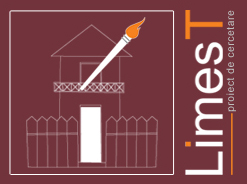 |
Tehnologie interdisciplinară de investigare a patrimoniului arheologic. Studiu de caz: Tronsonul premontan al Limes Transalutanus |
|
Limes Transalutanus Breviary
Link to Limes Transalutanus Breviary database
This module of the database was not planned as part of the project. I owe the idea to Dan Ștefan, a key member of the project. In the late spring 2017 he has confessed that he is amazed by the large number of toponyms, declaring himself lost. ‘When do you write a breviary?’ he asked. ‘Just a bit later’ I said. He was right. There are not only many place names along Limes Transalutanus, but already a bunch of papers and books in which they are used, however all theme-oriented (forts, settlements, frontier etc.), and not places-oriented. One certainly needs ‘directions for use’. The design of the application, as well as writing the first entries, came later, indeed, after the summer archaeological campaign, and we are approaching the opening for the public in mid-November 2017, two months after the ‘official’ project closed. At the opening time there will be around 100 records, but I am expecting a great total around 400. The titles are about some major features, like frontiers (Limes Alutanus, Limes Transalutanus), earthworks (Brazda lui Novac de Nord, Brazda lui Novac the Sud), as they are crossing LT, forts, settlements, roads, watchtowers and many others, including technical matters as historical maps, acronyms, dictionaries etc. I am focusing on Limes Transalutanus, mainly on its route between the Danube and the Argeș River, territory which made the object of the research project presented in these pages. I do not exclude an extension of the main object of the concern to other related subjects, in the future. The articles are abridged versions of the issues encountered, for each entry, having as the main goal to help the reader find supplementary data. I used literature references only if I found certain reasons to recommend them. I do not believe in ‘exhaustive’ work, only in exhausting work, and I never proposed myself to be a guide though the entire literature, a venture with no real future in this age of explosive expansion of the information. A huge part of the published literature is a factual compilation, with no real contribution for research. Therefore, I am more interested in discussing the original contributions, even older than one century - of course, when I have acknowledged them. In the form in which the database will become visible for the public, it is far from being a ‘definitive version’. On the contrary, it is a first-hand version, with no language proof (and I know from previous experiences that will contain many mistakes, when not just clumsiness). This is the deal I made with myself: to push things forward and support criticism, deserved or not. People which work do mistakes. Beginning with the next year I will mention all the entries considered ‘safe’, on which I am not planning further interventions. Even if that mention will be absent, records older than one year from the latest update, will be considered ‘definitive’. If I will yet change them, the latter intervention will be labelled like that (as ‘later edit’). The public is invited to provide feedback, no matter the issue, to put questions and raise problems. This is the only way we (I) can progress. Not all things written – already, or in the future – are perfectly clear to me either. Some of the entries are not even published yet, in consecrated formats. My goal is to put information on the scientific circulation, even if some things need surely further research. Please write to eusteo/at/gmail. Before the first use of the application, please read the Help file, because it includes copyright information, along necessary hints for use. Credits: Bogdan Prodan for the web-form of the application; Alexandra Teodor, implementation in the main website; Horia Nicolau for the network settings. For the illustrations used, many of them are due to the activity of my colleagues within the project: Dan Ștefan (UAV, geophysics), Madi Ștefan (photogrammetry). Other credits will be mentioned punctually. Eugen S. Teodor *** Link la Limes Transalutanus BreviaryAceastă aplicație (Breviar al Limes Transalutanus) folosește numai limba engleză, fiind practic imposibil de întreținut două versiuni identice, în engleză și română. Opțiunea pentru limba engleză este firească, mai ales în „lumea mică” a arheologilor cu preocupări în istoria militară romană, în care majoritatea celor realmente interesați de subiect au altă limbă maternă. Cititorii români sunt rugați să accepte scuzele și această explicație, fiind rodul unei reflecții serioase. Chiar și așa, aplicația oferă acces la numeroase ilustrații care pot fi utile pasionaților de istorie și care, neîndoielnic, vor găsi mijloacele pentru a înțelege cât mai bine explicațiile (de ex. Google Translate). |